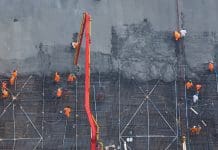Steve Gardner, managing director, Eco UK Group, tells us about PV panels and the benefits that they have to societal economic development
With climate change now a very real threat, more and more people are looking into ways they can make a difference and play their part by reducing their energy use and carbon footprint. And with gas prices now soaring, investing in photovoltaic (PV) panels, or solar panels to most of us, are now a serious consideration for many.
These panels are made of semiconductors that convert the sun’s energy into electricity, which is commonly used to power household appliances and increasingly more industrial buildings. Solar power is becoming a more viable source of energy as it is a natural eco-friendly alternative, and when used on larger scales, such as in business premises, which have large roof spaces, it is even more beneficial to the everyday running of the world’s most important industries.
Typically, PV panels are connected to consumer distribution boards where the energy will be distributed and used instead of the energy from the grid. Any surplus energy will be exported to the national grid where in some instances they can store excess energy for redistribution to various households. This is most useful at night when the panels aren’t operating. However, it is also possible to install battery attachments that can store energy for personal nighttime use.
As a renewable energy source, there are many benefits to investing in PV panels, but there is much to be considered as many sectors make the switch to renewable energy sources as an alternative to those that use fossil fuels. The question is, do the pros outweigh the cons and are PV panels the way forward for both domestic, industrial and commercial properties?
Crunching the numbers
It is undeniable that PV panel installations can be expensive but in recent years have significantly come down in price. A 4kW PV panel system, the most commonly used domestic solar panelling, costs between £4000-£6000, so it is important to consider the long term gain for such an investment. The yearly savings on electricity bills can accrue up to £500, which increases depending on the size of the system installed. Systems that generate higher electricity are inevitably more expensive, but the savings will also be greater in the long run.
The systems are designed using PV – Sol software that will produce an estimated annual yield of electrical KWH and C02 savings for every PV system. The software takes the last 20 years of weather data into consideration, which allows the yields and paybacks to be very accurate. Banks often insist on this if they are funding the PV system.
Unlike other renewable energy sources, PV panels have very low maintenance costs. Despite their fragility, they have far fewer breakages as there are no moving parts to maintain. The inverter which converts solar energy into electricity needs to be changed to ensure the efficiency of the panels, however, that is only necessary every 5-10 years. A 12-year warranty is often carried.
Solar batteries are also a great option to install in the home so that any unused energy during the day can be stored for electrical needs during the night and for darker days. This, in addition to the initial panel installation, can cut down bills substantially, yet the price of these batteries does add to the overall cost. Depending on the storage capacity and life cycle, a solar battery in the UK can range between £1200 – £6000. So what is the solution? Many solar panel owners opt to sell their unused energy back to the grid instead, as it is possible to make money through solar sustainability.
Reliable and sustainable
A major drawback of solar panels is weather dependency. The unpredictability of weather conditions is seemingly a drawback, especially in places like the UK where sunshine is an infrequent commodity. While these concerns are understandable, what most fail to realise is that sunshine is not actually necessary for solar panel functioning. Although not as efficient, if bright enough, panels can produce electricity even on cloudy days. Often, the PV array is oversized against the inverter as there are many more cloudy days than sunny, thus increasing the PV array efficiency.
The solar-powered industry is continually advancing and finding more efficient ways to provide power to homes and buildings all around the world. With that technological development comes easier construction of solar panels, as well as having fewer panels to convert higher amounts of energy. These developments mean that purchasing panels would become more affordable in the future.
It is also worth remembering that solar powered energy has many diverse applications which make it a superior option for its purpose: it can distil murky water, convert solar energy into both electricity and heat in remote areas that have no connection to the grid, and even power satellites in space.
Although sufficient capacity is needed, solar panels are seen to be extremely cost-effective; especially when it comes to selling the excess back to the grid. They also usually come with a 20-25 year warranty and last anywhere between 30-40 years. Currently, if you export to the Grid you can apply for the smart export guarantee where users will be paid for the surplus electricity.
When weighing up the strengths and weaknesses of PV panels, it’s clear that they are a sustainable and eco-friendly long-term investment. After the initial costly expenditure, the price is certainly made up for by the low maintenance and substantial annual savings. With this in mind, investing in them is a more economical way of living and working, is better for societal sustainability and makes a big impact on the environment and future generations.














